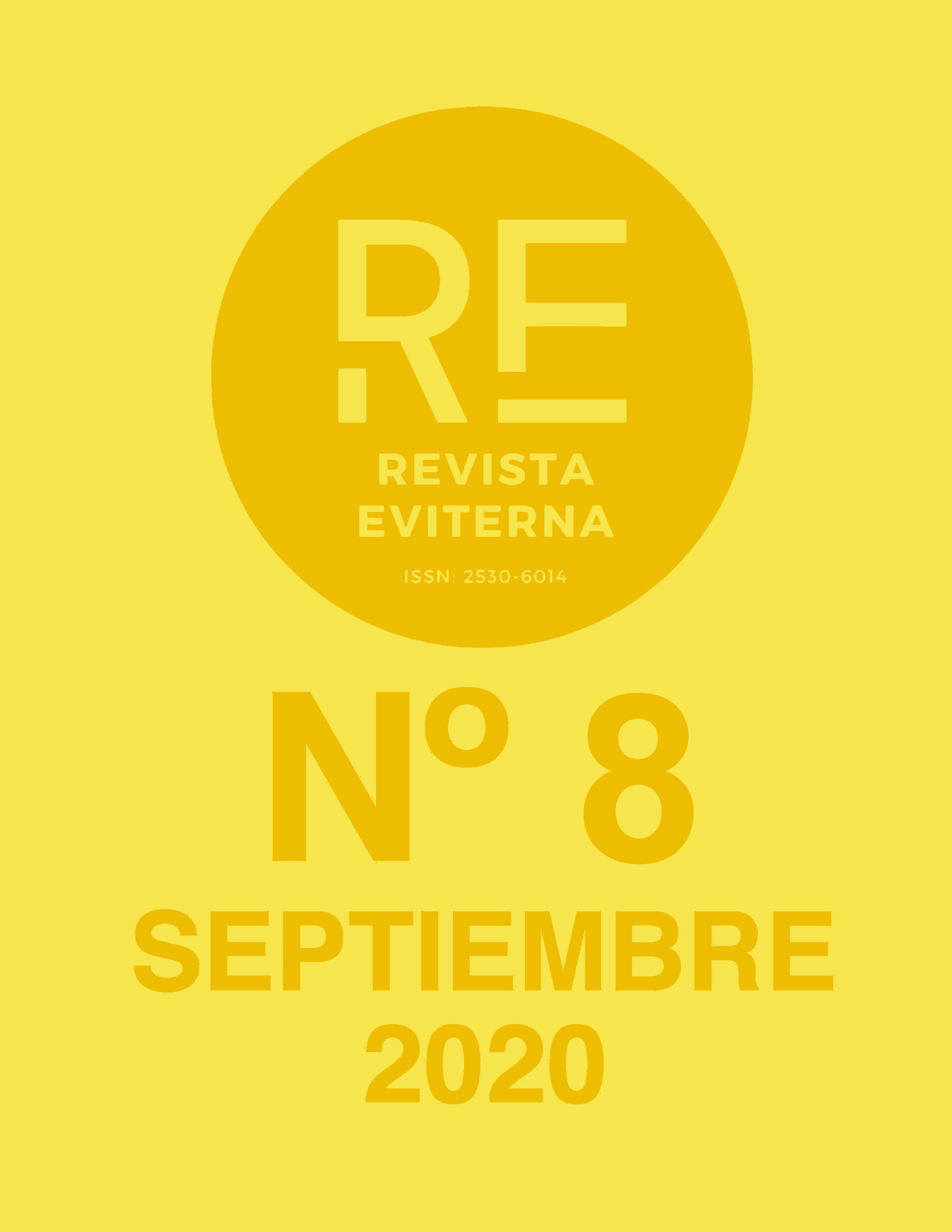The artistic construction of indigenous space and itinerant landscapes
DOI:
https://doi.org/10.24310/Eviternare.vi8.8654Keywords:
landscape, travels, expeditions, indigenous cultures, normativityAbstract
There is a gap regarding the Spanish American context from the landscape studies point of view, conceived in a cultural sense. Literature directly refers us to Alexander von Humboldt as the main developer and to the Hudson River school as the greatest exponent. However, a critical study in cultural landscape before the visual production of scientific voyages and expeditions, could result in a new approach to the landscape genre and the mapping of nature. This paper proposes an approach to those previous representations, when the landscape was not a landscape.
Downloads
Metrics
References
Adorno, R. (1991). Guamán Poma: literatura de resistencia en el Perú colonial. México: Siglo XXI.
Arnaldo, J. (1990). Estilo y naturaleza: la obra de arte en el romanticismo alemán. Antonio Madrid: Antonio Machado.
Baron, F. (2005). “From Alexander von Humboldt to Frederick Edwin Church. Voyages of Scientific Exploration and Artistic Creativity”. Alexander von Humboldt im netz. VI (10), 173-185.
Bleichmar, D. (2012). Visible Empire: Botanical Expeditions and Visual Culture in the Hispanic. Enlightenment. University of. Chicago Press.
Careri, F. (2002). El andar como práctica estética. Barcelona: Gustavo Gili.
Dixon, J. (1991). “Le paysage americain est-il devenu no européen?”, Le Debat, 65.
Ette, O. (2008). Literatura en movimiento. Espacio y dinámica de una escritura transgresora de fronteras entre Europa y América. Madrid: CSIC.
Garrido, E. (2018). Arte y Ciencia en la pintura de paisaje: Alexander von Humboldt. Madrid: Doce Calles.
Garrido, E., Rebok, S., Puig-Saper, M.A. (2016). “El arte al servicio de la ciencia: antecedentes artísticos para la impresión total del paisaje en Alexander von Humboldt”, Dynamis, 36 (2), 363-390.
Gombrich, E. (2000). Art and Illusion. A study in the psychology of pictorial representation. New York: Princeton University Press.
Gómez-Mendoza, J., Sanz Herráiz, C. (2010). “De la biogeografía al paisaje de Humboldt: pisos de vegetación y paisajes andinos equinocciales”, Población y Sociedad, 17 (1), 29-57.
Harmon, K. (2010). The Map as Art: Contemporary Artists Explore Cartography. Princeton University Press.
Humboldt, A.v. (2003). Cuadros de la Naturaleza. Madrid: Los libros de la Catarata.
Humboldt, A.v. (2011). Cosmos. Madrid: CSIC.
Leighly, J. (1963). Land and Life. A selection from the writings of Carl Ortwin Sauer. Berkeley: University of California Press.
Lubowski, A. (2009). The Picture of Nature: Alexander von Humboldt and the Tropical American Landscape. PhD dissertation, Institute of Fine Arts, New York.
Maderuelo, J. (2005). El paisaje. Génesis de un concepto. Madrid: Abada.
Maderuelo, J. (2012). “La mirada pintoresca”, Quintana, 11, 79-90.
Mason, P. (2001). The lives of images. Londres: Reaktion Books.
Milani, R. (2007) El arte del paisaje. Madrid: Biblioteca Nueva.
Mitchell, W.J.T. (1994). Landscape and Power. Londres: Routledge.
Misch, J. “Ciencia y Estética. Reflexiones en torno a la presentación científica y la representación artística de la naturaleza en la obra de Alejandro von Humboldt”. En M. Cuesta y S. Rebok (eds.) Alexander von Humboldt. Estancia en España y viaje americano. Madrid: RSG-CSIC, 279-298.
Muller, C. (2011) “Los diarios de viajes y las Bellas Artes. Del dibujo ilustrador a la obra artística autónoma”. En R. Musser (ed.). El viaje y la percepción del otro: viajeros por la península ibérica y sus descripciones (siglos XVIII y XIX). Madrid: Iberoamericana Vervuert, 109-118.
Mundy, B. (1996). The Mapping of New Spain. Indigenous Cartography and the Maps of the Relaciones Geográficas. University of Chicago Press.
Nygren, E.J. (1986). Views and Visions: American Landscape before 1830. Washington D.C.: The Corcoran Gallery of Art.
Pratt, M.L. (2010). Ojos imperiales: literatura de viaje y transculturación. Mexico: FCE.
Pulido Rull, A. (2020). Mapping Indigenous Land: Native Land Grants in Colonial New Spain. University of Oklahoma Press.
Roger, A. (2014). Breve tratado del paisaje. Madrid: Biblioteca Nueva.
Russo, A. (2005). El Realismo Circular: Tierras, Espacios y Paisajes de la Cartografía Novohispana, siglos XVI y XVII. Mexico: UNAM.
Sáenz-López, S. (2014). Los mapas de los beatos: la revelación del mundo en la Edad Media. Burgos: Siloé.
Sáenz-López, S. (2011). “Las primeras imágenes occidentales de los indígenas americanos: entre la tradición medieval y los inicios de la antropología moderna”, Anales de Historia del Arte, 1, 463-481.
Woodward, D. (1987). Art and Cartography: Six Historical Essays. New York: Princeton Architectural Press.
Zusman, P. (2015). “No solo el reposo configura geografías”, Terra Brasilis [En línea], Acceso: 23 abril de 2020. URL: http://journals.openedition.org/terrabrasilis/1367
Downloads
Published
How to Cite
Issue
Section
License
All the contents published in Revista Eviterna are subject to the Creative Commons Reconocimento-NoComercia-Compartirigual 4.0 license, the full text of which can be found at <http://creativecommons.org/licenses/by-nc-sa/4.0>
They may be copied, used, disseminated, transmitted and publicly exposed, provided that:
The authorship and original source of your publication (Journal, editorial and URL of the work) are cited.
They are not used for commercial purposes.
The existence and specifications of this use license are mentioned.

Copyright is of two kinds: moral rights and patrimonial rights. Moral rights are perpetual, inalienable, inalienable, inalienable, inalienable and imprescriptible prerogatives.
In accordance with copyright legislation, Revista Eviterna recognizes and respects the moral rights of the authors, as well as the ownership of the economic right, which will be transferred to the University of Malaga for dissemination in open access.
The economic rights refer to the benefits obtained by the use or disclosure of the works. Revista Eviterna is published in open access and is exclusively authorized to carry out or authorize by any means the use, distribution, disclosure, reproduction, adaptation, translation or transformation of the work.
It is the responsibility of the authors to obtain the necessary permissions of the images that are subject to copyright.






12.png)
